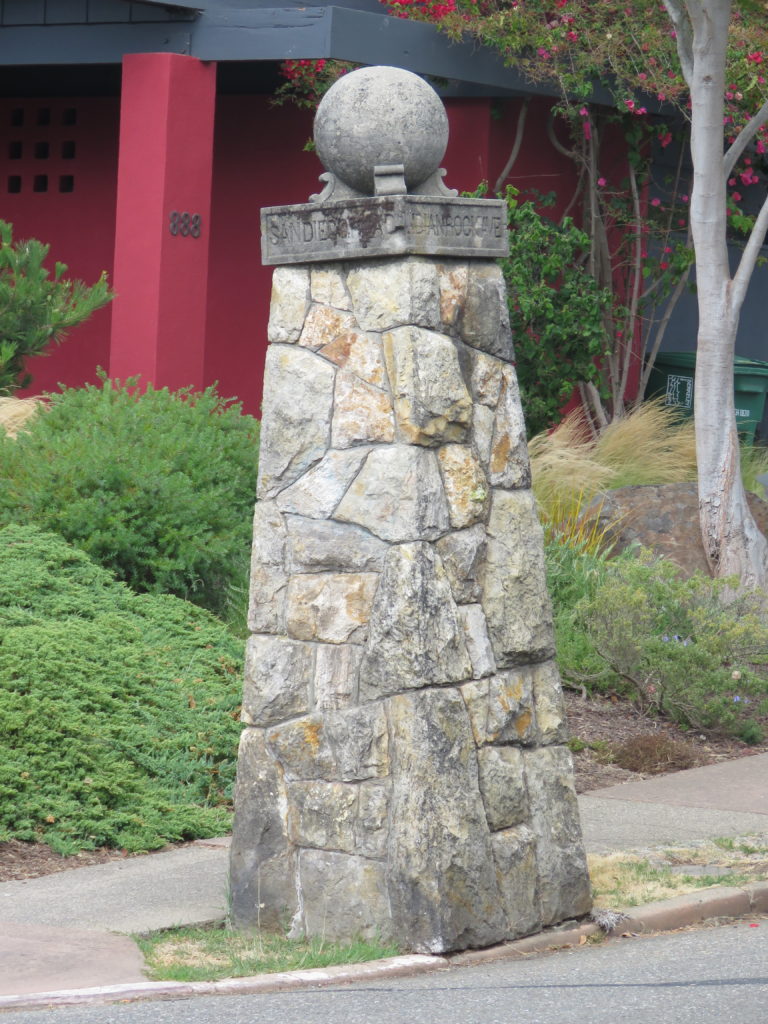The Northbrae area (as well as Cragmont and Thousand Oaks) features many rhyolite outcrops. In keeping with the Berkeley Hillside Club’s dictum of leaving trees and rocks in situ and building around them, the developers turned the largest outcrops into parks: Indian Rock, Mortar Rock, Grotto Rock, Contra Costa Rock, Great Stoneface, Cragmont Rock.
Before California became a state, the most notable outcrop was the Peralta Border Stone, marking the northern boundary of the Peralta Rancho. This rock was not made into a park and is now in the backyard of a house on Vincente Avenue. Compare all this to the fate of the eponymous “rock” of the Rock Ridge development in North Oakland, which was dynamited to make room for more houses and is now a shadow of its former self.
I once attended a lecture by Doris Sloan, Professor of Geology at UC Berkeley, where she spoke of how rhyolite is a volcanic rock that comes up to the surface and cools there, whereas granite is a volcanic rock that cools underground. When asked “why are the rhyolite outcrops located where they are?” she answered “because that’s where they came up!”
Today, Indian Rock is the most best-known outcrop, and is famous in the rock-climbing community for having good surfaces on which to practice. David Brower and Galen Rowell are among those who honed their skills here.

